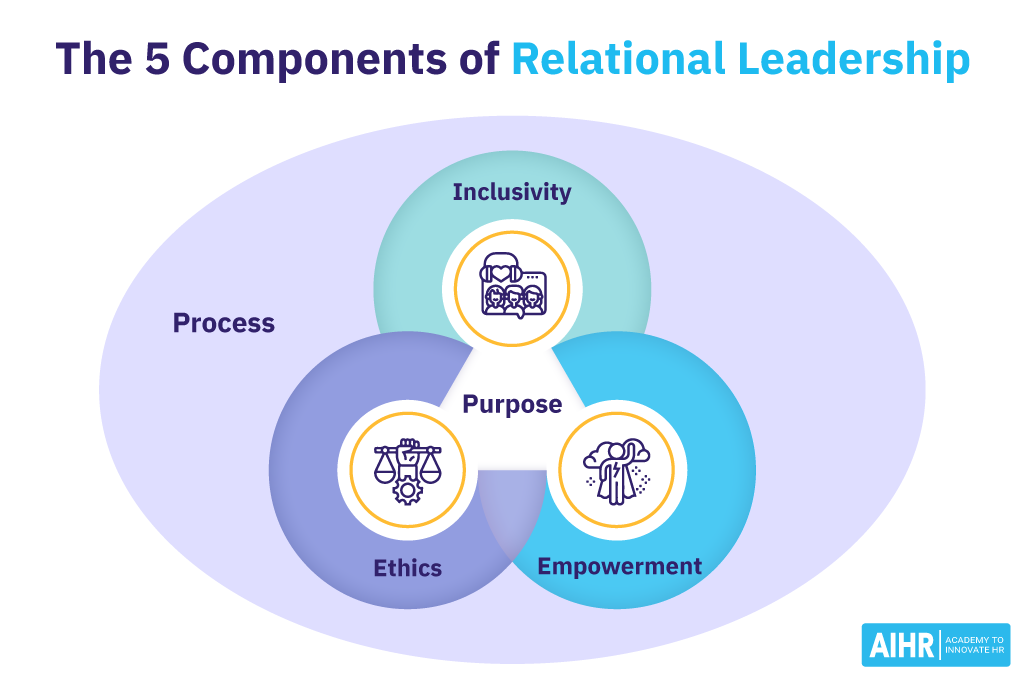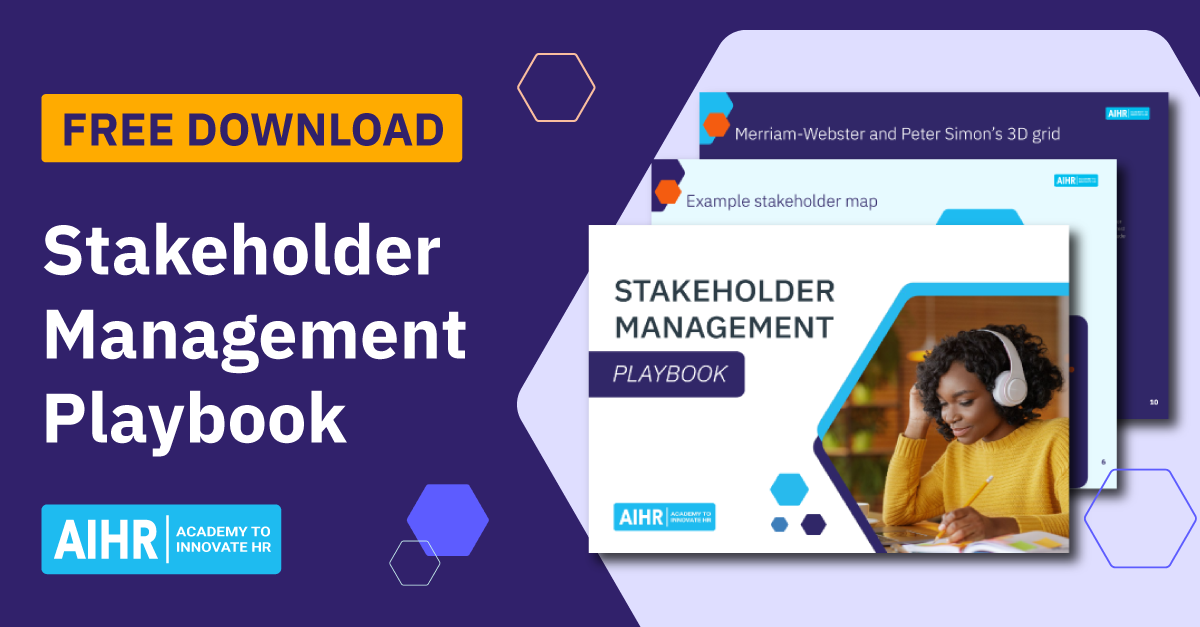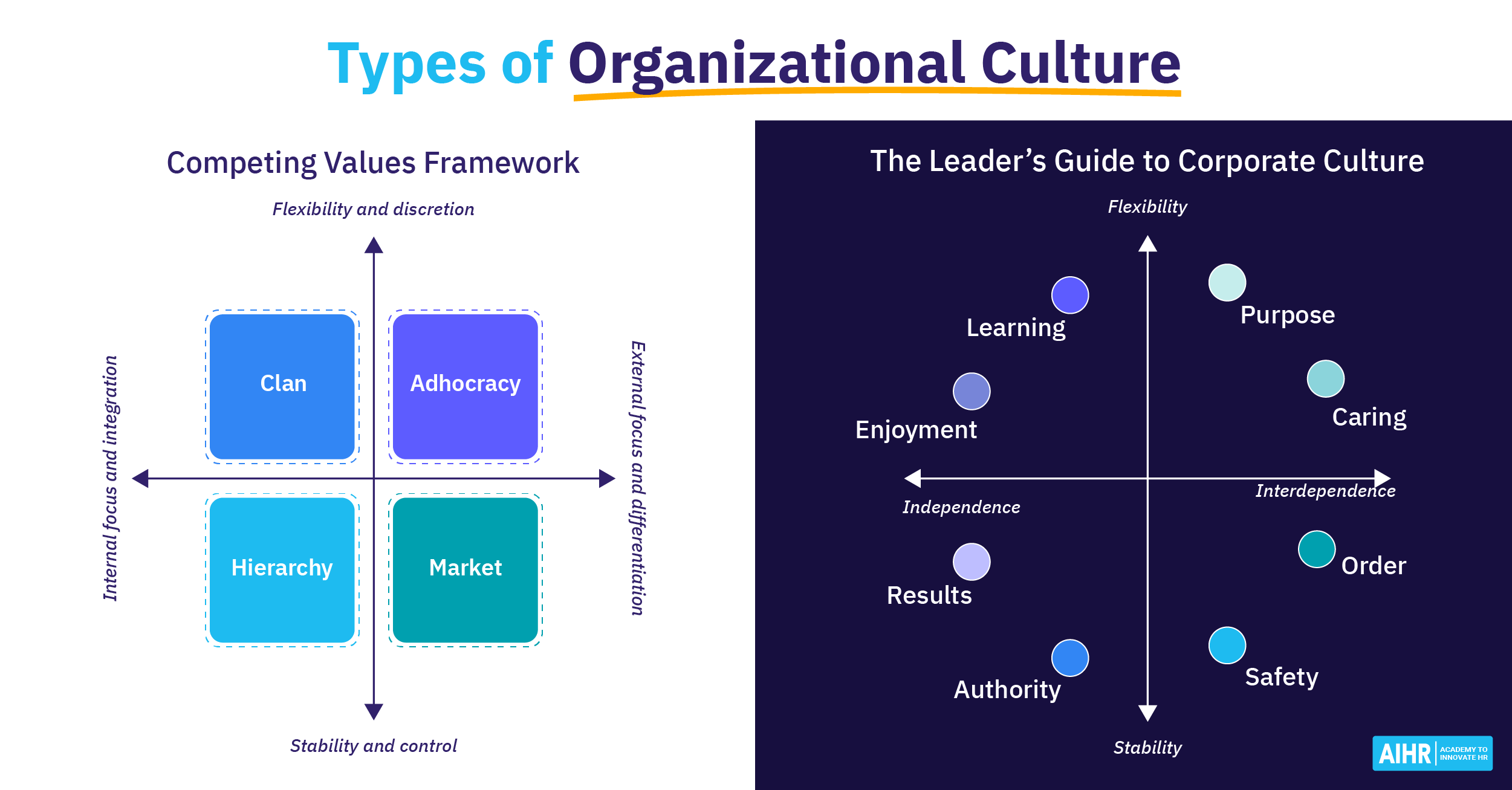Relational Leadership
What is relational leadership?
Relational leadership is an approach that focuses on the significance of building strong, positive relationships between leaders and their team members. It’s characterized by an emphasis on collaboration, trust, communication, and mutual respect among all members of an organization or group.
The relational leadership theory posits that effective leadership is relational in nature, suggesting that the quality of relationships between leaders and followers is central to leadership effectiveness.
5 components of relational leadership
The relational leadership model is built around five core components, each playing a crucial role in fostering effective leadership and organizational success:
- Ethics: Ethical leadership is at the heart of relational leadership. It involves making decisions based on fairness, honesty, and integrity. Relational leaders prioritize ethical considerations in all aspects of their leadership, ensuring that their actions and their organization’s actions reflect a commitment to moral principles.
- Inclusivity: Relational leaders strive for inclusivity, making concerted efforts to ensure that everyone, regardless of background or identity, feels valued and included. This component emphasizes the importance of diversity and equality within the organization, fostering an environment where all voices are heard and respected.
- Process orientation: Unlike leadership styles focusing solely on outcomes, relational leadership strongly emphasizes the processes leading to those outcomes. This involves focusing on how decisions are made, how tasks are accomplished, and how people work together. Process orientation ensures that the journey to achieving goals is just as valued as the goals.
- Empowerment: Empowering team members is a crucial aspect of relational leadership. This involves delegating authority, encouraging autonomy, and providing the resources and support team members need to succeed. By empowering their team, relational leaders foster a sense of ownership and accountability among employees.
- Purpose: A clear and compelling purpose is essential in relational leadership. Relational leaders articulate a vision that resonates with their team, aligning individual and organizational goals. This shared purpose motivates and unites team members, driving collective action towards achieving common objectives.

Benefits of relational leadership
Here are some key benefits of relational leadership:
- Enhanced team collaboration and cohesion: Relational leadership fosters an environment of open communication and mutual respect, which improves team collaboration.
- Better conflict resolution: Strong relationships provide a solid foundation for addressing and resolving conflicts. Relational leaders are skilled at navigating disagreements in a way that preserves relationships and finds mutually beneficial solutions.
- Higher levels of trust and respect among team members: Trust is a critical component of effective leadership. Relational leaders build trust by being transparent, showing integrity, and demonstrating genuine care for their team members.
- Greater adaptability and resilience in the face of change: Organizations led by relational leaders tend to be more adaptable and resilient. These leaders value input from their team and are more likely to embrace change and innovation as they understand the importance of evolving to meet new challenges.
Positional leadership vs. relational leadership vs. transformational leadership
| Leadership style | Description | Focus | Decision-making | Ideal setting |
| Positional leadership | Leadership based on the authority of a position within an organization. | Enforcing rules, policies, and procedures. | Generally centralized, with decisions made by the leader. | Can be effective in structured organizations with clear authority and accountability lines. |
| Relational leadership | Leadership that focuses on building relationships and trust among team members. | Developing and maintaining strong, trust-based relationships with and among team members. | More decentralized, encouraging input and participation from team members. | Effective in teams and organizations where trust and personal bonds are crucial to performance. |
| Transformational leadership | Leadership that inspires and motivates followers to achieve extraordinary outcomes. | Inspiring change, innovation, and a shared vision for the future. | Visionary, often involving strategic thinking and collective input to guide decision-making. | Highly effective in environments that require change, innovation, and a robust and unified direction. |
How to implement a relational leadership style: Tips for HR
Here are 6 helpful tips for cultivating a relational leadership style within your organization:
- Lead by example: Leading by example is foundational in establishing a culture of trust, respect, and integrity. When leaders consistently demonstrate the behaviors and values they wish to see in their team, it sets a powerful precedent. This includes showing vulnerability, admitting mistakes, and treating failures as learning opportunities.
- Get to know your employees: Investing the time to understand each team member’s strengths, weaknesses, aspirations, and personal interests signifies a genuine investment in their wellbeing and professional development. This can be achieved by conducting regular one-on-one meetings, informal check-ins, and showing interest in their life outside of work.
- Foster team collaboration: Creating an environment that encourages collaboration involves more than just assigning group tasks. It requires building a culture where diverse ideas are valued, there’s mutual respect among team members, and collective success is celebrated. Encouraging open dialogue, facilitating brainstorming sessions, and creating cross-functional teams for projects can help break down silos and promote a more cohesive and innovative work environment.
- Recognize and appreciate efforts: Acknowledgment and appreciation of efforts go a long way in building a motivated and loyal workforce. Recognition should be timely, specific, and communicated in a way that resonates with the individual. This could range from public acknowledgment in team meetings to personalized notes or tokens of appreciation.
- Support professional and personal growth: Investing in employees’ professional development not only enhances their skills and career prospects but also benefits the organization by promoting a culture of ongoing learning and adaptability. Offering training programs, mentorship opportunities, and support for further education are key strategies.
- Develop peer coaching circles: Peer coaching circles offer a platform for employees to share skills, knowledge, and experiences in a supportive and structured environment. These circles facilitate talent development, problem-solving, and the strengthening of interpersonal relationships across the organization.
FAQ
The main center of relational leadership is the quality of relationships between leaders and their followers. It prioritizes building positive connections that enhance communication, collaboration, and overall organizational wellbeing.
An example of relationship leadership is when a manager actively mentors their team, providing continuous feedback, recognizing each member’s contributions, and fostering an environment where everyone feels valued and motivated to contribute their best.







